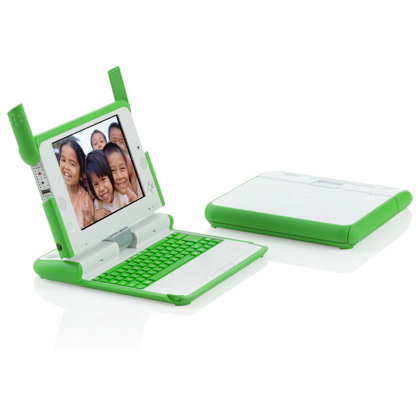
Index Awards 2007 winners announced
The winners of the Index Awards 2007 - the self-styled "world's biggest design award" with prizes of €100,000 for each winner - have been announced at a ceremony in Copenhagen, Denmark.
There is one winner in each of the five categories of Body, Home, Work, Play and Community. There is also a People's Choice Award.
The winners are:
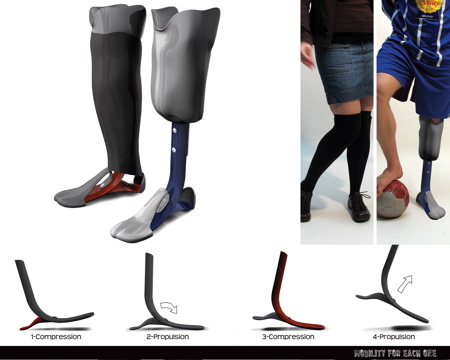
Above: Sébastien Dubois for Mobility for Each One (Body category) - a prosthetic limb for land-mind victims that costs just $8;
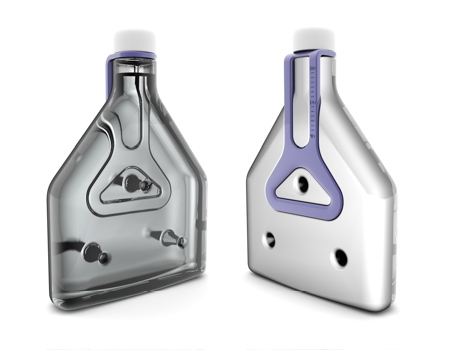
Above: Solar Bottle by Alberto Meda & Francisco Gomez Paz (Home category) - a water bottle with a built-in, solar-powered device for purifying water;
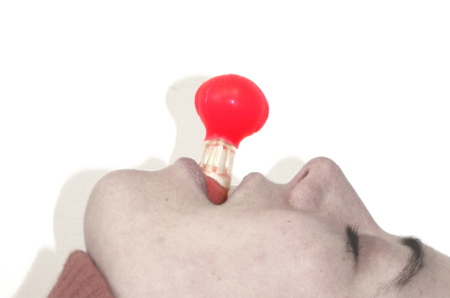
Above: Tongue Sucker by Philip Greer, Lisa Stroux, Graeme Davies & Chris Huntley (work category) - a hand-held device for clearing the airways of an unconscious patient;
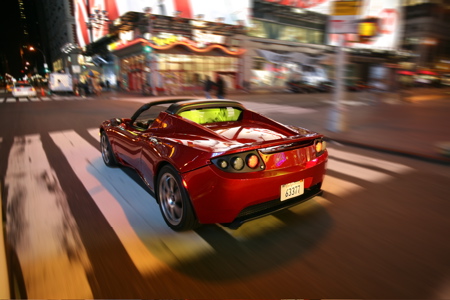
Above: Tesla Roadster by Elon Musk, Chairman of Tesla Motors, Tesla CEO Martin Eberhard and Barney Hatt, principal stylist at Lotus Design Studio (Play category) - a zero-emissions roadster;
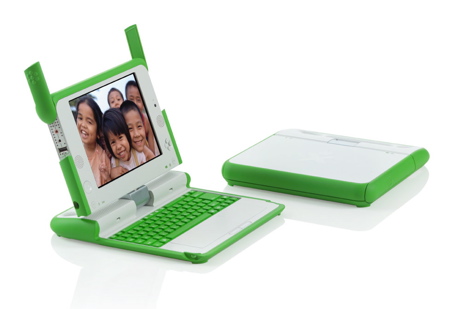
Above: OLPC XO by a team including Rebecca Allen, Christopher Blizzard, V. Michael Bove, Yves Behar/fuseproject, Walter Bender, Michail Bletsas, Mark Foster, Jacques Gagne, Mary Lou Jepsen, Nicholas Negroponte and Lisa Strausfeld (Community category) - a cheap, self-powered laptop computer for the developing world.

Above: The People's Choice Award went to Hân Pham for Antivirus – a cap to protect against needle infections.
Below are full details on the winners:
--
On August 24, 2007 the winning designs in the five INDEX: categories received the world's biggest design award of 100 000 € each at a ceremony at Copenhagen City Hall:
BODY
Mobility for Each One (Sébastien Dubois)
Approximately 25 000 people, mostly civilians, are mutilated by landmines each year. Hundred of thousands of victims all over the world need proper prosthetic products in order to resume an active life. Unfortunately, a quality prosthesis usually costs between 1300 and 4000 US Dollars, which many do not have the economic means to afford.
Canadian designer Sébastien Dubois has designed a low-cost, high-quality model that can be locally produced for only 8 US Dollars. In order to keep production costs down, “Mobility for Each One" can be produced in any conventional workshop, and the materials needed are easily available. The prosthetic foot can be fitted to various types of upper leg prosthetics and is developed especially to fit the standards of Red Cross.
HOME
Solar Bottle (Alberto Meda & Francisco Gomez Paz)
One sixth of the world's population has no access to safe drinking water, increasing their risk of waterborne diseases such as diarrhea, cholera, typhoid fever, Hepatitis A and dysentery. When attending an exhibition under the theme “H2O" at Milan's International Furniture Fair, Meda and Paz learned about the SODIS system, a simple, low-cost solution for treating drinking water at a household level. Contaminated water is filled into transparent plastic bottles.
When exposed to full sunlight for six hours, the pathogens in the water are destroyed. Meda and Paz decided to design a container that brings the best out of the SODIS system, and the result is Solar Bottle, which has one transparent face for UV-A + infrared rays collection and one aluminium color to increase the reflections. The high ratio surface/thickness of the low cost four liter container improves the performance of solar disinfection and its flat shape makes it stackable and facilitates storage. A handle makes it possible to regulate the angle for best solar exposition and ensures easy transportation.
WORK
Tongue Sucker (Philip Greer, Lisa Stroux, Graeme Davies & Chris Huntley)
The London terrorist bombings in July 2005 were an eye opener for four industrial design engineers from the Imperial College and the Royal College of Art in the UK. From emergency services, Graeme Davies, Phillip Greer, Christopher Huntley and Lisa Stroux learned that any delay in the arrival of paramedics was critical. An unconscious persons tongue will fall to the back of the throat, blocking the airway, and without an adequate airway, an unconscious person will die or suffer severe brain damage within 4 minutes.
The Tongue Sucker is basically a small plastic chamber with a bright colored bulb-like air reservoir, which allows untrained bystanders at the scene of an accident to open the airway of an unconscious person immediately and effectively. Squeeze the bulb, place it over the tongue of the injured person and release. Suction draws the tongue off the back of the throat, creating a small but vital gap to allow the unconscious person to breathe. Once in place, the first aider is free to perform CPR, call for help or assist other casualties. In addition, the brightly colored bulb signals to arriving paramedics which casualties have been treated.
PLAY
Tesla Roadster (Elon Musk, Chairman of Tesla Motors, Tesla CEO Martin Eberhard and Barney Hatt, principal stylist at Lotus Design Studio)
The Tesla Roadster is a 100% electric vehicle, with zero emissions and zero-to-sixty acceleration in four seconds. The Roadster is the first production electric vehicle to incorporate a 200+ mile range per charge, and with a fuel efficiency equivalent of 135 miles per gallon and gorgeous styling, the Tesla Roadster proves that electric cars can be cool and fun to drive. The battery recharges in three and a half hours, which might raise your electricity bill, but because of its mileage, driving the Roadster actually costs only about one cent per mile.
Normally a new car brand penetrates the marked from midst level, affordable for the many. However, to rid electricity powered cars of their golf cart reputation and make them objects of desire, the stylish 100 % electricity powered sports car Tesla Roadster targets the high-end market. The plan is to leverage the Tesla Roadster‘s technology, resulting in a less expensive sports sedan that can be sold by 2010 at higher volume, upping the environmental impact.
COMMUNITY
OLPC XO (Team including Rebecca Allen, Christopher Blizzard, V. Michael Bove, Yves Behar/fuseproject, Walter Bender, Michail Bletsas, Mark Foster, Jacques Gagne, Mary Lou Jepsen, Nicholas Negroponte and Lisa Strausfeld)
99 % of children in developing countries leave school without having touched a computer. Without a computer-literate population, developing countries will continue to struggle to compete in a rapidly evolving, global information economy. The XO Laptop is about the size of a textbook and lighter than a lunchbox, making it easy for children to carry. XO is designed to be used in parts of the world where many classes are taught outside, and therefore it is sunlight-readable as well as shock and moisture resistant.
In order for students to interact, a mobile ad-hoc network allows many machines to gain internet access from one connection and a maze-network connects all the laptops within reach. The XO can be hand-powered and comes with at least two of three options: A crank, a pedal, or a pull-cord. Plus, it features enhanced battery management for an extended recharge-cycle lifetime.
People's Choice Award
The People's Choice Award is presented on the basis of votes cast by the audience of INDEX: AWARD EXHIBITION and the readers of the Danish newspaper Politiken.
Winner of the 2007 People's Choice Award: Antivirus – a cap to protect against needle infections (Denmark) Designed by Hân Pham
The designer of Antivirus – a cap to protect was inspired by her own experience as a young girl in a Singaporean refugee camp, where she received a vaccination with an infectious needle, making her sick for a long time. The cap is mounted on readily available beverage cans for segregation and isolation of used needles which are secured inside the permanently sealed can, preventing re-use of needles. The design embodies an element of sustainability in that it uses a waste product available even in low income countries.
INDEX: DESIGN TO IMPROVE LIFE
INDEX: is a global non-profit network organization that focuses on Design to Improve Life – e.g. design that substantially improves important aspects of human life – worldwide.
Through a wide range of activities and events, INDEX: is the catalyst for Design to Improve Life: an organization that spurs public and professional awareness of the great – and too often unnoticed – human and commercial potential of Design to Improve Life.
INDEX: presents the best examples of Design to Improve Life, awards the very best and provides access to the underlying processes, thinking and people by:
- AWARDING the biggest design award in the world, worth €500,000, for Design to Improve Life. (Five winning designs are each awarded €100 000.)
- PRESENTING international design exhibitions displaying Design to Improve Life.
- HOSTING summits for world leaders on design and innovation.
- PUBLISHING and distributing knowledge about Design to Improve Life.